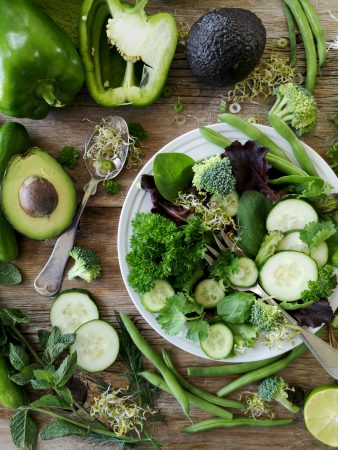The Autoimmune Protocol (AIP) diet is designed to help manage autoimmune conditions by reducing inflammation and promoting gut health.
If you struggle with symptoms like fatigue, joint pain, or digestive issues, this diet may help alleviate discomfort and improve overall well-being. Here’s what you need to know about AIP and how to get started.
Why was the Autoimmune Protocol Diet developed?
The AIP diet was developed based on emerging research into the connection between diet, gut health, and autoimmune disease. It builds upon the principles of the Paleo diet but removes additional food groups known to cause inflammation.
Dr. Loren Cordain, a researcher on Paleolithic nutrition, laid the foundation, while Dr. Sarah Ballantyne, a medical biophysicist and autoimmune disease expert, expanded on the concept and popularized AIP through her research and books.
The diet is rooted in the idea that a compromised gut lining, often referred to as “leaky gut,” can contribute to autoimmune responses. By eliminating inflammatory foods and focusing on healing nutrients, the AIP diet aims to restore gut integrity and reduce immune system overactivity.
The AIP diet has two main phases
The AIP diet is a more restrictive version of the Paleo diet, eliminating foods that may trigger inflammation while emphasising nutrient-dense, whole foods. It removes common irritants like grains, dairy, and nightshades to allow the body to heal.
The diet follows two key phases:
Elimination phase: For 4-6 weeks, you remove all potentially inflammatory foods, focusing on nutrient-rich, healing foods.
Reintroduction phase: Foods are gradually reintroduced one at a time to identify which ones trigger symptoms, allowing for a personalised long-term diet plan.

Unsplash
Who would benefit from the AIP diet?
The AIP diet is particularly beneficial for individuals with autoimmune diseases such as rheumatoid arthritis, lupus, Hashimoto’s thyroiditis, and inflammatory bowel diseases like Crohn’s disease and ulcerative colitis. It may also help those experiencing chronic inflammation, digestive issues, or unexplained fatigue. Anyone looking to improve their overall health through an anti-inflammatory approach may find value in AIP.
Foods to eat on AIP diet
AIP encourages whole, unprocessed foods that support healing:
- Vegetables: Leafy greens, carrots, zucchini, and other non-nightshade vegetables.
- Proteins: Grass-fed meats, wild-caught fish, and nutrient-rich organ meats.
- Healthy fats: Olive oil, coconut oil, and avocado.
- Fruits: Berries, apples, and bananas in moderation.

Unsplash
Foods to avoid on AIP diet
Certain foods are eliminated to reduce inflammation and gut irritation:
- Grains: Wheat, rice, oats, and other grain-based products.
- Dairy: Milk, cheese, yogurt, and butter.
- Legumes: Beans, lentils, soy, and peanuts.
- Nightshades: Tomatoes, potatoes, eggplants, and peppers.
- Processed foods and sugars: Artificial additives, refined sugars, and preservatives.
Benefits of the AIP diet
Following the AIP diet can lead to several health improvements, including:
- Reduced inflammation and autoimmune symptoms.
- Improved gut health and digestion.
- Increased energy levels and overall well-being.
Before making any significant dietary changes, consult a registered dietitian or doctor to ensure the AIP diet is appropriate for your individual health needs and conditions.
ALSO SEE: 4 COOKBOOKS TO INSPIRE HEALTHY EATING IN 2025
Image: Pexels
Article originally written and published by Woman and Home Team.

